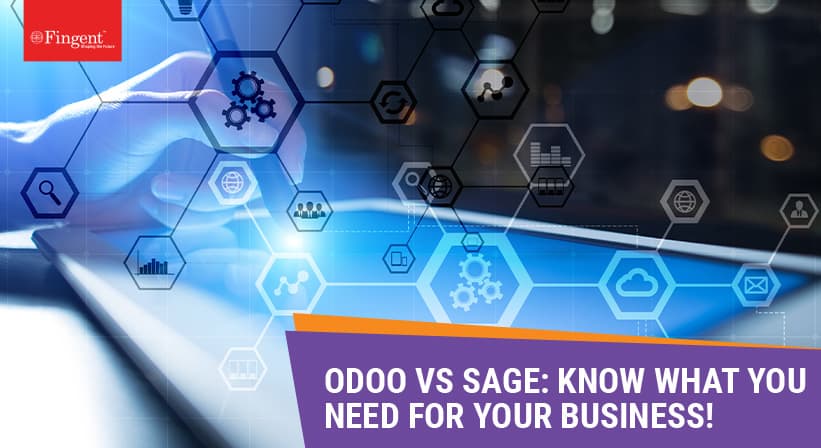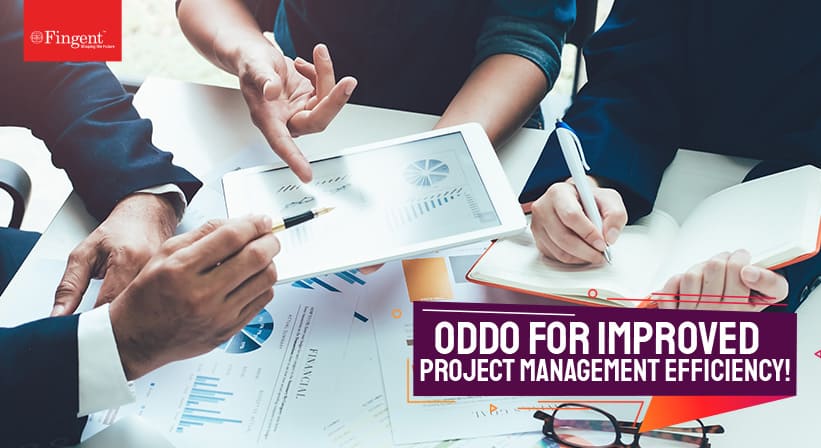Odoo CRM vs. Salesforce CRM: How To Make The Right Choice
A Head-to-head Comparison of Odoo CRM vs. Salesforce
The race for business success is tough. Mimicking your competitors in what is working for them might seem like a good idea, but it will get you nowhere in the long run. Success comes only when you find that perfect recipe that is unique to your organization and gets you a notch above everyone else. This is particularly true when it comes to your CRM software. You must choose the right software that fits your sales teams’ unique and complex needs perfectly.
The quest for that perfect CRM software requires analyzing various crucial factors. Making the right choice can radically impact the effectiveness of your daily operations and boost the productivity of your sales team. The factors you need to consider are vendor reliability, real total implementation cost, pros and cons, full list of features, and user reviews. In this article, we provide a comparison of Odoo CRM and Salesforce CRM against six key criteria. We hope this helps you in making an informed decision.
Read more: Odoo CRM Vs SAP CRM: How to Choose Between Them
What is the Difference?
Salesforce is often described as “the world’s #1 CRM sales app.” It claims to put everything you need at your fingertips – accessible from anywhere. It makes collaboration across your global organization easier and gets your deals done faster.
Odoo, on the other hand, is often described as “the open-source ERP and CRM.” It is a business management software that includes CRM, e-commerce, accounting, billing, warehouse, manufacturing, project management, and inventory management.
So, here we’re comparing these two popular CRMs against these 6 criteria:
1. Marketing automation comparison
One of the proven strategies to generate sales by any enterprise around the globe is being able to send messages to customers at exactly the right time. In this regard, both Odoo and Salesforce have great marketing automation features.
- Salesforce allows you to send a customized email to your customer through web personalization.
- Odoo kicks it up a notch, allowing you to design an entire workflow for your enterprise. You can automate your action depending on the customer’s reaction to your email which might include replying to your email or deleting it.
2. Cost comparison
The actual cost of CRM software includes the subscription fee, software license, software training, and customization cost, hardware, and the cost of other services such as support and maintenance. It is crucial that you account for all the costs involved to understand the system’s “total cost of ownership.”
- Salesforce CRM starts at $25 per user/month. They also offer a yearly plan. Apart from this, you will have to make additional payments for integrations that you will add to your software.
- Odoo CRM too starts at $25 per user/month but offers a free plan which is helpful for startup companies. Although integrating paid apps incurs charges, the Odoo Community Edition is free.
3. Integration comparison
Your software serviceability requires powerful integrations.
- Salesforce can integrate with a variety of apps making it suitable for all businesses.
- Being an open-source software Odoo provides free apps that can be integrated into any kind of business.
4. Contact management comparison
One of the key capabilities that businesses require is the ability to view and manage contacts.
- Since Salesforce is a cloud-based CRM, it can obtain certain missing details of your contacts from other sources in the cloud. Also, it can analyze the interactions between the contacts over various social media platforms which can be a great help to your business in generating leads.
- Odoo gives you complete access to the history of business interactions for each customer. This allows you to adjust your business strategies according to the purchasing habits of your customers. You can also synchronize Odoo with your Google Calendar so you can keep track of your meetings and additional follow-ups.
5. Dashboards and reports comparison
While dashboards assist you in presenting and viewing your business performance, reports help you audit sales and gauge work performance. Dashboards and reports help you make smart business decisions.
- Salesforce allows you to build a customized dashboard according to your business requirements.
- Odoo offers free apps to create customized dashboards allowing you to create a variety of reports, balance sheets, tax reports, and bank reconciliation.
6. Vendor comparison
- Salesforce is a global software company best known for its cloud-based CRM. In 2012, Fortune ranked Salesforce 27 in its 100 best companies to work for. It was also listed in the New York Stock Exchange.
- The Odoo community has 1,500 active members and has contributed over 4,500 modules. It has a network of certified partners established in over 100 countries. Odoo is one of the most frequently installed business suites with more than 1,500 downloads per day.
Read more: A 3-day Odoo CRM implementation story!
Make An Informed Decision
While taking a decision, remember to compare the features of Salesforce and Odoo through the lens of usability, flexibility, and the unique needs of your employees and business. The highly modular and customizable solution provided by Odoo CRM is designed specifically for cost-effective and high-performance scalability and growth.
Although Odoo is newer to the market when compared to Salesforce, this open-source CRM is used by certain popular names such as Hyundai, Toyota, and Alta Motors. There is no denying that Odoo has gained the trust of many users and is highly coveted by businesses of all sizes including SMEs/ SMBs.
Read more: Meeting the HR Requirements With Odoo
Fingent is an Official Partner of Odoo and has hands-on expertise in the consulting, implementation, and customization of Odoo for clients across several industries. If you need further help in making your decision or want to get started with Odoo, give us a call right away.
Stay up to date on what's new

Recommended Posts

31 Oct 2022 B2B
SAP S/4HANA: The Definitive Guide!
Historically, SAP solutions have required abundant resources and time to implement. However, this investment of time and resources pays dividends, as organizations that successfully implement the latest SAP solutions gain……

31 Jan 2022 B2B
Shifting to Odoo ERP? Why Do You Need a Partner?
It’s time to load up your arsenal. Why? Because it's wartime and you’re here to win! The COVID-19 pandemic has held the world in its vice-like grip for a considerable……

15 Dec 2021
Odoo vs Sage: Know What Is Better For Your Business?
Enterprise Resource Planning (ERP) software helps keep track of your product, sales, marketing, and other metrics and boosts organizational efficiency. However, finding the right one for your business can be……

20 Oct 2021
How Can Odoo Augment Your Company’s Project Management?
A study by Havard Business Review reveals that one in every six projects costs over 200% of the estimated amount, and 70% of IT projects face delays. Despite the availability……
Featured Blogs
Stay up to date on
what's new




















































